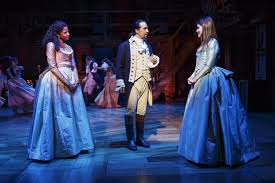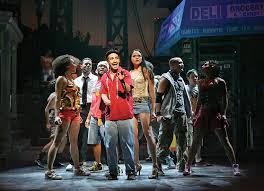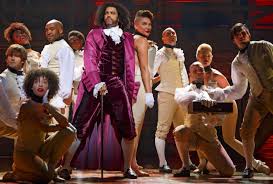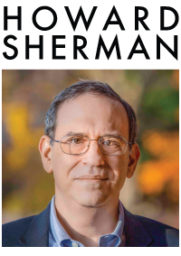
Still from NYGASP video spot on YouTube
Oh, New York Gilbert and Sullivan Players, what are we going to do with you?
It was surprising to many that you thought you could do a “classic” yellowface Mikado in New York in 2015. But you also responded pretty quickly once there was an outcry against the practice, with the first blog posts of dismay (from Leah Nanako Winkler, Erin Quill, Ming Peiffer and me) posted on Tuesday and Wednesday and the production canceled by midnight on Friday morning. You’ve promised to bring your Mikado into alignment with current sensibilities at some point in the future, and I’m one of the many people who had cordial conversations with your executive director David Wannen in the wake of the September controversy.
So one can’t help be brought up short by your current commercial for The Pirates of Penzance, the production which replaced The Mikado at NYU’s Skirball Center. Shot in the Old Town Bar just north of Union Square, it features pub denizens having a Gilbert & Sullivan sing-off with some piratical looking men, as well as some geriatric British naval officers. All in good fun, it seems.
So why is there an admittedly brief shot in the ad of three yellowface geishas in a bar booth being leered at (by telescope, no less) by the British officers? Why is there still yellowface as part of advertising a production that was scheduled to eradicate yellowface?
Now I’m fully prepared to acknowledge this is probably an old TV spot, and all that has been changed is the superimposed show title, venue and number to call for tickets at the end. In fact, having watched New York television for much of my life, I’d say this spot could be quite old, and may well have emanated from days when Pirates, The Mikado and H.M.S. Pinafore were the bedrock of your repertory.
But in light of all that has happened over the past four months, seeing those faux-Asian women giggling behind their fans seems wholly out of place, if not a slap at those who advocated for a more enlightened take from you going forward. I acknowledge the effort and cost of recutting, or even reshooting, a commercial, but it might have been wise for you to not keep propagating the very imagery that led you to decide to cancel your production.
There’s no way to know whether you’re buying broadcast or cable time for the spot, but you just posted it to YouTube at the beginning of this month. This morning, the spot was featured in an e-mail blast you sent. So this possibly vestigial ad is still very much part of your marketing.
As I noted in a conference call with David Wannen, it is not lost on us that Albert Bergeret, the company’s artistic director, has not – so far as I know, and I’d be happy to be corrected – publicly expressed his support for the decision to remove The Mikado from your repertoire pending a reconception. Even this brief glimpse of yellowface suggests that the message of respecting ethnicities other than white hasn’t really sunk in. In fact, this could be seen by some as you winking at the controversy and telling your regular audiences that your “traditions” will be upheld, even if your sole intent was to economize and recycle an existing ad.
C’mon NYGASP, you said you were going to do better. You’ve taken some important steps, but it seems you’ve still got a ways to go.
Thanks to Barb Leung for sharing the e-mail and video from NYGASP.
Howard Sherman is interim director of the Alliance for Inclusion in the Arts and director of the Arts Integrity Initiative at The New School College of Performing Arts.

Renée Elise Goldsberry, Lin-Manuel Miranda and Phillipa Soo in Hamilton (Photo by Joan Marcus)
In the wake of the recent casting controversies over Katori Hall’s The Mountaintop and Lloyd Suh’s Jesus in India, there have been a number of online commenters who have cited Lin-Manuel Miranda’s musical Hamilton as a justification for their position in the debate. What’s intriguing is that Hamilton has been offered up both as evidence of why actors of color must have the opportunity to play both characters or color and characters not necessarily written as characters of color – but it has also been used to say that anything goes, and white actors should be able to play characters of color as well.
In the Broadway production of Hamilton, the characters are historical figures who were all known to have been white, but they are played by actors of many races and ethnicities, notably black, Latino and Asian. My position on non-traditional (or color-blind or color-specific) casting is that it is not a “two-way street,” and that the goal is to create more opportunities for actors of color, not to give white actors the chance to play characters of color.
As it happens, I had an interview scheduled with Miranda last week, the night before Thanksgiving. Race wasn’t the subject at all, however. We were speaking about his experiences in, and views on, high school theatre, for Dramatics magazine, a publication of the Educational Theatre Association (ask a high school thespian for a copy). But when I finished the main interview, and had shut off my voice recorder, I asked Miranda if he would be willing to make any comment regarding the recent casting situations that had come to light. He was familiar with The Mountaintop case, but I had to give him an exceptionally brief précis of what had occurred with Jesus in India. He said he would absolutely speak to the issue, and I had to hold up my hand to briefly pause him as he rushed to start speaking, while I started recording again.
“My answer is: authorial intent wins. Period,” Miranda said. “As a Dramatists Guild Council member, I will tell you this. As an artist and as a human I will tell you this. Authorial intent wins. Katori Hall never intended for a Caucasian Martin Luther King. That’s the end of the discussion. In every case, the intent of the author always wins. If the author has specified the ethnicity of the part, that wins.
“Frankly, this is why it’s so important to me, we’re one of the last entertainment mediums that has that power. You go to Hollywood, you sell a script, they do whatever and your name is still on it. What we protect at the Dramatists Guild is the author’s power over their words and what happens with them. It’s very cut and dry.”
This wasn’t the first time Miranda and I have discussed racial casting. Last year, we corresponded about it in regard to high school productions of his musical In The Heights, and his position on the show being done by high schools without a significant Latino student body, which he differentiated from even college productions.

Lin-Manuel Miranda, Karen Olivo and the company of In The Heights (Photo by Joan Marcus)
“The joy of In The Heights runs both ways to me,” he wrote me in early 2014. “When I see a school production with not a lot of Latino students doing it, I know they’re learning things about Latino culture that go beyond what they’re fed in the media every day. They HAVE to learn those things to play their parts correctly. And when I see a school with a huge Latino population do Heights, I feel a surge of pride that the students get to perform something that may have a sliver of resonance in their daily lives. Just please God, tell them that tanning and bad 50’s style Shark makeup isn’t necessary. Latinos come in every color of the rainbow, thanks very much.
“And I’ve said this a million times, but it bears repeating: high school’s the ONE CHANCE YOU GET, as an actor, to play any role you want, before the world tells you what ‘type’ you are. The audience is going to suspend disbelief: they’re there to see their kids, whom they already love, in a play. Honor that sacred time as educators, and use it change their lives. You’ll be glad you did.”

Daveed Diggs and the company of Hamilton (Photo by Joan Marcus)
Anticipating the flood of interest in producing Hamilton once the Broadway production and national tours have run their courses, I asked Miranda whether the acting edition of the script of Hamilton will ultimately be specific about the cast’s diversity, and whether, either at the college level or the professional level, he would foresee a situation where white actors were playing leading roles.
“I don’t have the answer to that. I have to consult with the bookwriter, who is also me,” he responded. “I’m going to know the answer a little better once we set up these tours and once we set up the London run. I think the London cast is also going to look like our cast looks now, it’s going to be as diverse as our cast is now, but there are going to be even more opportunities for southeast Asian and Asian and communities of color within Europe that should be represented on stage in that level of production.
“So I have some time on that language and I will find the right language to make sure that the beautiful thing that people love about our show and allows them identification with the show is preserved when this goes out into the world.”
Authorial intent, y’all. Authorial intent.
Howard Sherman is interim director of the Alliance for Inclusion in the Arts and director of the Arts Integrity Initiative at The New School College of Performing Arts.







